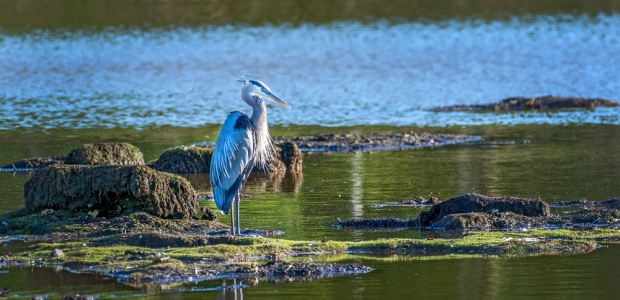
NY DEC Awards Grants for Riparian Buffers in Chesapeake Bay Watershed
The grants are for projects to permanently protect riparian buffers through land acquisition and conservation easements. Riparian buffers are strips of trees, shrubs, or grasses planted next to streams or other waterbodies.
New York State Department of Environmental Conservation Commissioner Basil Seggos has awarded three grants totaling nearly $1 million for programs in New York's portion of the Chesapeake Bay watershed. Funding for the grants is provided by EPA, and DEC's Chesapeake Bay Watershed Program administers the grants.
"Riparian buffers are critical to New York's continued effort to reduce nutrients and sediment in the Chesapeake Bay watershed. New York, along with six other jurisdictions, are working together to restore the Chesapeake Bay," said Seggos. "Riparian buffers have the added benefit of reducing flood impacts, creating wildlife habitat and providing shade to streams. These land acquisitions and conservation easements will permanently protect these riparian areas and help improve and sustain water quality and habitat."
The grants are for projects to permanently protect riparian buffers through land acquisition and conservation easements. Riparian buffers are strips of trees, shrubs, or grasses planted next to streams or other waterbodies. By planting vegetation along streams, space is created between the water and upland land uses, helping to protect the water quality and stream habitat by reducing the amount of nitrogen, phosphorous, and sediment entering the bay.
Grants have been awarded to:
- Tioga County Soil and Water Conservation District, $669,620. The Upper Susquehanna Coalition via the Tioga County Soil and Water Conservation District will implement a restoration program composed of multiple riparian buffer and streambank stabilization projects. Projects will restore approximately 80 acres of riparian buffer and 350 linear feet of streambank along Mud Creek in Birdseye Hollow State Forest and in the Lower Butternut Creek watershed in Otsego County.
- Edward L. Rose Conservancy, $199,032. The Edward L. Rose Conservancy will implement a protection and restoration program to establish perpetual conservation easements on 28 acres of riparian buffers in Broome and Tioga counties. Restoration work will be completed through a partnership with Trout Unlimited.
- Finger Lakes Land Trust, $124,212. The Finger Lakes Land Trust will implement a protection program to permanently protect 69 acres of existing riparian buffer habitat in the Susquehanna watershed using a combination of fee simple land acquisition and perpetual conservation easements.
New York's portion of the Chesapeake Bay watershed is made up of the Susquehanna River watershed and Chemung River watershed. EPA established the Chesapeake Bay Total Maximum Daily Load (TMDL) to address the water quality problems in the Chesapeake Bay caused by excess nutrients and sediment. A Total Maximum Daily Load defines the capacity of a waterbody to absorb a pollutant and still meet water quality standards. The Chesapeake Bay TMDL sets limits on the amount of nutrients and sediment that can enter the Bay. Because nutrients and sediment in the bay come from all over the watershed, six states and Washington, D.C., are working to meet the goals outlined in the TMDL.